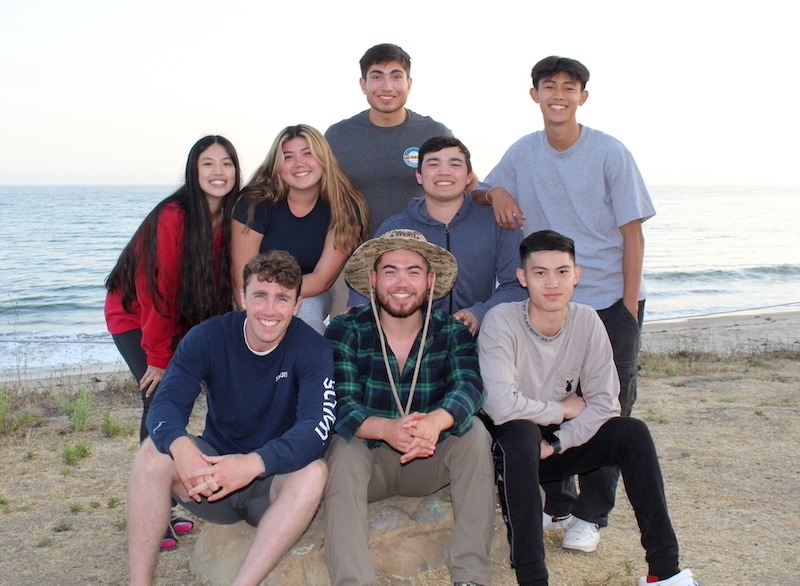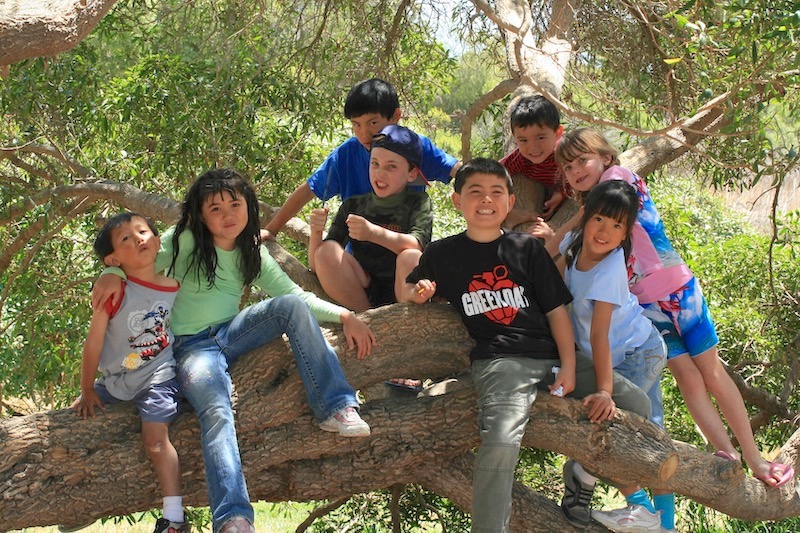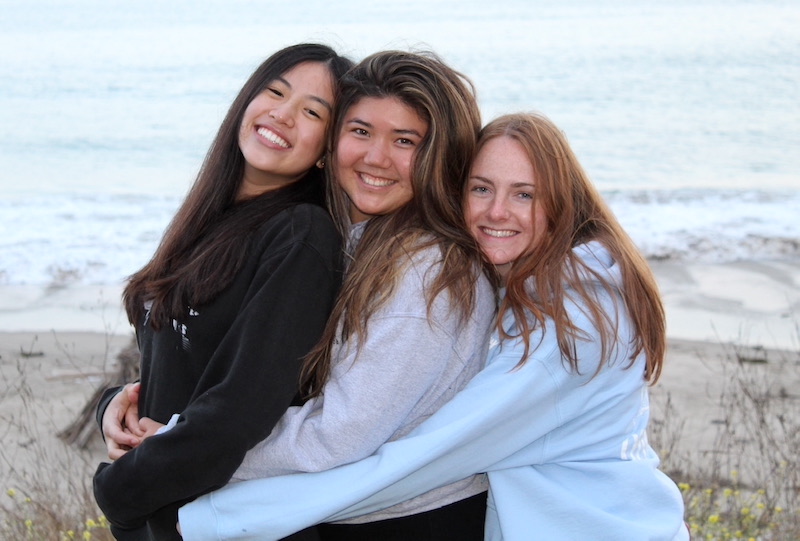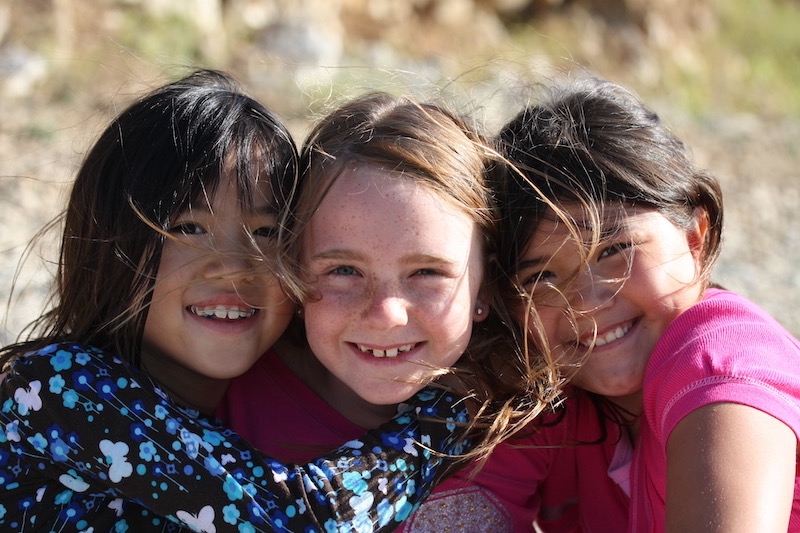Student Blog
Arianna

What I learned during my time as a student ambassador ⟩
August 9, 2021, by Arianna
Beginnings and Endings Getting Involved
When I first started this job, I wasn’t sure I’d be able to handle all of the responsibilities that came with it. During the school year, there are typically 7 student ambassadors working at the same time. However, in the summer there is only one. I felt apprehensive going into this job but after a few weeks of work, I was pleasantly surprised with how comfortable I was in this position. For my last blog as the summer student ambassador, I thought I’d let any prospective student ambassadors know how this job helped me with my personal growth and what the position entails!
Information Sessions
One of the first tasks I had was hosting an information session for the Entry-Level OTD program with Dr. Anvarizadeh. I ended up doing 6 info sessions throughout the summer! At these info sessions, I presented a few slides and answered questions in the chat. Speaking about a program that doesn’t exist was a little intimidating, but Dr. Anvarizadeh, Dr, Nxumalo, and Dr. Bennett set great examples and their positive feedback helped me overcome any lingering feelings of imposter syndrome!
These information sessions helped me develop my public speaking skills and after a few info sessions, I noticed that I sounded more natural. Being completely honest, I did have notes that I referred to as I spoke, but doing info sessions taught me how to sound like I wasn’t reading a script. Eventually, I was able to host a BS-OTD info session by myself and I didn’t have to use any notes! To be fair, the BS-OTD program is extremely similar to the BS-MA program so most of the information was easy for me to explain.
Social Media
If you weren’t aware, I have been managing the social media accounts for the past 13 weeks. I enjoyed this responsibility because it allowed me to express my creative side! I also want to say a quick thank you to all the students who sent me pictures to post on our accounts. From your arts and crafts to Neuro PJ Day, the photos you’ve shared added so much vibrancy to our accounts! Managing social media accounts involves deciding what to post and when, designing the graphics for each post, and reposting all the wonderful posts we’re tagged in!
Handling the social media accounts taught me how to analyze trends! I noticed that our most popular posts celebrate the joys and accomplishments of the USC Chan Family. I hope that we continue to share these events with you all and I’m sure there will be an abundance of occasions to post about in the upcoming school year!
Meeting with prospective students
Out of all the different responsibilities I had, this one was my favorite. Meeting with prospective students involves setting up a one-to-one Zoom meeting and answering any questions one may have.
This aspect of my job was my favorite because I got to be an advocate for our program and I was able to share my experiences with potential future Trojans. I think this was the one task that I didn’t learn a whole lot from, which is not a bad thing! The meetings I had with prospective students flowed so naturally. I didn’t get nervous when I talked to them, and there was never any awkward silence because I can talk about Chan for hours and hours!
Admissions Projects
Working on projects for the admissions team was probably the area I was most inexperienced in. These projects involved collecting and organizing data so that our admissions team could use it in the future.
The most obvious skill I gained from working on admissions projects was how to use spreadsheets. I had almost no experience with spreadsheets when I started my job as a student ambassador. However, after 13 weeks of admissions projects, I’ve learned many tricks that I hope to use in the future!
Blogging
Last but not least, blogging was part of my job as a summer student ambassador. The student ambassadors have full control over what they write about, which makes it more of a therapeutic activity instead of work. We can give advice to students, talk about our favorite occupations, and even document a vacation (which I did)!
Blogging taught me how to write in different styles. The first blog I wrote was written with a slightly formal tone. However, I quickly realized that blogs are supposed to be fun to read! The audience does not want to feel like they are reading out of a textbook. Therefore, I let down all my walls and started writing with a more personal voice. Doing this made the writing process so much easier. I just let the words flow straight from my mind to the computer without worrying about how professional I sounded.
Well I guess this is the end of my blogging series! I enjoyed testing out my writing skills over these past 13 weeks and I hope some of the advice I wrote was helpful to many! Thank you all for reading and if there are any prospective student ambassadors reading this, I hope you learned a little more about the position!
⋯

Camping with my childhood friends ⟩
July 22, 2021, by Arianna
When I was younger, my older brother was in Cub Scouts. There were three other boys in his troop that he became close friends with, and inevitably, the moms became close as well. Two of the boys had sisters my age, and we became inseparable. In 2007, our parents planned a camping trip to Refugio State Beach, just a few miles north of Santa Barbara. This trip soon became a tradition, and we have been camping there every summer for the past 14 years (not including 2020 for obvious reasons)!
Every year more and more people join the group. In fact, about 14-16 different families come with us now! This vacation has always been my favorite because I’m constantly surrounded by my friends and family. There are no electrical outlets there so we have to conserve our phone batteries. As a result, we get to spend real quality time together without being distracted by technology. When we camp, we usually spend all day at the beach. For dinner, we have a giant potluck and eat together at the picnic tables. At night, we typically have a campfire, play a giant game of hide and seek, watch the kids goof around, and just enjoy each other’s company.
Here are a few pictures from our most recent trip and the trips we made in the past!

2021: These are the people I went on the first camping trip with! I am in the red on the left and my brothers are wearing black jeans on the right. My best friend and fellow Trojan is the girl I’m smiling next to 😊

2007: Here is a picture from our first camping trip!

2019: These are the two girls I met in Cub Scouts. We have known each other since 2003!

2009: And here’s a picture of us at one of our childhood camping trips.
This year’s trip was especially meaningful for me. I felt a little sad after the school year ended because I realized this was my last summer break EVER before I start having fieldwork every summer and eventually a full time job. I also realized that I only had one full year at USC’s main campus. My sophomore year was cut short, my junior year was entirely online, and my senior year will be at the Health Sciences Campus (HSC). I began to feel like I lost too much time and that I missed out and will miss out on so many opportunities to make lasting memories with my friends from undergrad.
However, after going on this trip, I realized, friendship has no time limit. I only see my camping friends a few times a year, yet every time we meet, it feels like nothing has changed. I know the same will be true for the friends I’ve made at USC. Although I am excited to meet new people and make new friends at HSC this fall, I know I will stay close with my friends at main campus. One day, I hope to introduce both groups to each other, and maybe I can even bring them camping!
Thank you all for reading and I hope this blog inspires you to reach out to old friends!
⋯

What I wish I knew before taking the “Foundations” courses: Part 2 ⟩
June 24, 2021, by Arianna
Hello again! Here is the second part of my last blog. I hope this mini-series gives the Entry-Level MA students some study tips for their next exam. In this blog, I will talk about Neuroscience and Creativity, Craft and Activity Analysis!
Foundations: Neuroscience:
Neuroscience was slightly easier than Kinesiology for me because I have a pretty decent background in Psychology and Cognitive Science. However, we did cover a LOT of information in this class. Nonetheless, Dr. Persson is such a lovely professor to be around so I’m sure you will have a great time learning about the nervous system!
- Tip #1: Make a study guide ASAP.
Eventually, Dr. Persson will post a study guide for each unit. I suggest downloading that study guide and filling it out as you cover the content in class. This will save you a LOT of time when you are studying, and it will help you focus your attention on the important information. But please don’t disregard the information that is not on the study guide. Everything you learn in this class will come up in your life whether it be on the exam, or with a future client. As my Physiology professor once said, “If you don’t want to study for your own benefit, study for the benefit of your future patients”.
- Tip #2: Watch YouTube videos about each topic.
Some of the concepts you learn about in this class are hard to understand without the assistance of videos. For example, I watched the same video of neural tube formation probably 6-8 times before I was confident enough to move on. (Here’s the
link if you were interested.)
Actually, I think I’ll just link all of my go-to videos!
In my opinion, these topics are difficult to learn about on paper, so I recommend watching some videos to help you gain a more comprehensive understanding of each concept.
- Tip #3: Study with real-life examples.
You will be learning about many different conditions and disabilities in this class and it can be hard to keep track of each individual disability. I guess this tip is pretty similar to the last tip but I suggest looking up “Living with ______” when you are studying disabilities. Hearing the story from a real person and watching how the disability affects their daily life is a lot more memorable than reading bullet points off a slide.
Foundations: Creativity, Craft and Activity Analysis
I can’t lie, this class was the most fun out of the 4 Foundations courses. However, I might be a little biased because Crafts was the only class I had in person. Towards the end of the semester, we started having in person Crafts a few times a month which made this class stand out from the others. In my opinion, this class is not stressful. In fact, it is the exact opposite! Being able to relax and create things with my hands for three hours once a week allowed me to unwind and forget my worries. Therefore, I don’t have many study tips, but I do have some advice!
- Tip #1: Fully immerse yourself in the activity.
When I first started this class, I had a hard time letting myself relax and enjoy the moment when we were crafting. As you all probably know, being a full time student can be overwhelming. I did not want to allow myself to relax because I felt guilty for not studying. Although you may feel this way at times, please enjoy yourself and have fun with this unique opportunity to make art in class! During this course, I decided I would put my entire heart into it because I wanted to find a new favorite occupation. I eventually realized how happy I was when I crafted, and decided to pick up nail art as a hobby.
- Tip #2: Get a head start on your final essay.
I would get a head start on your final essay if possible. When I was in the class, Dr. Dieterle posted the prompt for the final essay a few weeks before it was due. I ended up writing it that weekend because I had 2 other finals on the same day the final essay was due! Hopefully none of you have 3 finals on one day, but you will be thanking yourself for getting a headstart on your work when exams start to pile up.
- Tip #3 Take notes during guest speaker presentations.
This might be obvious but you should take lots of notes during the guest speaker presentations! I’m not sure if you have to write Guest Speaker Reflections, but if you do, it will be helpful to take ample notes during the presentation so you have plenty of topics to write about in your reflection. As a bonus, these notes might be a source of inspiration for you in your future career!
That was my last tip for the blog. I hope you enjoyed this mini-series and found this advice helpful. If you have any questions, feel free to reach out to me at .(JavaScript must be enabled to view this email address).
Thank you for tuning in!
⋯

What I wish I knew before taking the “Foundations” courses: Part 1 ⟩
June 18, 2021, by Arianna
Throughout my Junior year, I took the four “Foundations” for occupational therapy courses: Occupation, Kinesiology, Neuroscience, and Creativity, Craft and Activity Analysis. These were some of my favorite classes because I got to know my future professors, I spent more time with the 12 students in my cohort, and I learned material that will support me in my future career as an OT.
By the time this blog is up, the Entry-Level MA students will be finishing their first week of classes, and as some of you may know, they are taking the same four Foundations courses that the BS-MA students took this past year! So, fellow future classmates, this blog is for you 😊 . I’ll be writing tips and advice for each class so keep reading if you want some pointers!
Disclaimer: I’m not sure if the structure of the summer classes is the same as the classes I took. Hopefully it is but if not, I hope you can still gain something helpful from this blog!
Foundations: Kinesiology
In my opinion, Kinesiology was the most challenging Foundations course BUT at the same time it was the class I gained the most from. If you loved anatomy, I think you will enjoy this class as well!
- Tip #1: Use the “Complete Anatomy” app to study
If you don’t have this app already, sign into your USC email and click this link: https://libguides.usc.edu/c.php?g=293713&p=1956412. It will give you access to a FREE lifetime membership to Complete Anatomy! This app is great because it allows you to isolate each muscle and watch them in motion. Seeing how the muscles shortened and lengthened really helped me form a better understanding of the function of each muscle, which in turn helped me memorize the prime actions!
- Tip #2: Get up and move during the test!
Although a normal professor would not appreciate their students standing up and moving around during an exam, Dr. Sopkin encouraged the exact opposite! During the tests, it was SO helpful to act out the different actions of each muscle with my own body. For example, if I couldn’t remember the actions of my anterior deltoid, I would just swing my arm around and note which movements required the use of that muscle. I believe your professor is Dr. Rafeedie this summer, but I think she will also encourage you to do the same.
- Tip# 3: Make empty muscle charts
Pretty soon, all of you will be very familiar with the term “muscle charts”. Once you get these charts, I recommend organizing them by unit, and making a blank version of each chart in Google Docs. When it’s time to study for the exam, pull out your empty muscle charts and fill them in until you can do it from memory. Although the amount of content you need to memorize seems intimidating, if you start memorizing the muscle charts as soon as you get them, you will do just fine.
- Tip # 4: Create acronyms for force couples
Sooner or later, you will learn about force couples, and these can be hard to remember at times, especially when there are multiple in each unit. Acronyms always make memorizing easier for me. Here’s one acronym I made that I remember off the top of my head: SLT (Some Lettuce and Tomatoes). S=Subscapularis, L=Latissimus dorsi, T=Teres major. Together, these muscles aDduct the shoulder. How I remembered this force couple was: AD(d) Some Lettuce and Tomatoes. Lol.
Foundations: Occupation
For everyone who loves history, this class might be your favorite! Being completely honest, this class wasn’t as stressful as Kines. It is largely discussion based, and I was a history nerd in high school so this class was right up my alley.
- Tip #1: Start making a “timeline”
I apologize in advance if you do not have to make a timeline at the end of the summer, but I would start taking notes on 1-2 important figures in each chapter and 1-2 important events. These are facts that you should be writing down regardless, but taking these notes may just help you get a head start on your final project.
- Tip #2: Use the app “Speechify”
If you watched my Instagram takeover a while back, you probably heard me talk about the text-to-speech app, “Speechify”! When I was in Foundations: Occupations, we had a lot of heavy reading. I can’t lie, long and dense readings take me forever to complete because I somehow always manage to read without processing anything. As a result, I have to go back and read the same sentence over and over again until I can comprehend it. When I discovered Speechify, I was able to get through the reedings a lot faster! I am an auditory learner, so listening to the readings made it much easier for me to stay focused.
This blog is getting long so I’ll have to make 2 parts! Come back next Friday for more tips; I’ll be talking about Neuroscience and Creativity, Craft and Activity Analysis!
⋯

Can’t Sleep? Count Sheep! ⟩
June 4, 2021, by Arianna
Although Mental Health Awareness month is over, I wanted to write about something I struggle with that many of you may experience as well: sleeplessness. Don’t get me wrong; I love sleeping. I love having vivid and nonsensical dreams that linger in my mind all day, and I love being able to rest and recuperate with an occupation as restorative as sleep. The one thing I don’t love is the “simple” process of falling asleep.
My typical night goes as follows: I get into bed, lay on my side curled up in a fetal position, close my eyes, and think about the day. Pretty soon, I start to think about some embarrassing thing I did in high school. Then, I think about grad-school, and worry about how I’m supposed to pay for that. Next, I think about having to wake up before seven in the morning to commute to classes if I decide to live at home in 2022. Before you know it, my heart is racing, my blood pressure is up, and my entire sympathetic nervous system is ready for action! This can go on for thirty minutes to an hour.
Once my brain is too tired to think, my body takes over. I suddenly have the urge to pee, but when I walk to the bathroom, the urge disappears. Pretty soon, I can feel every fold and wrinkle in my pajamas, and the idea of sleeping in lumpy clothing forces me to get up and reposition myself. Next, I can see a tiny beam of light peeking through the blinds, which of course, bothers me. And last but not least, my baby hairs start to tickle my face. AGHHH!!! By now, I’ve been in bed for two hours, and I have to be up in six.
Now I forget about my body and I am only filled with frustration, for I have just wasted 2 hours of sleep! This sequence of events used to happen every single night, but I’ve picked up a few tricks to help me overcome my sleeplessness.
1. Melatonin tablets
Over the past year, my best friend has become melatonin tablets! Taking 10 mg of melatonin an hour before bedtime helps me feel sleepy. Melatonin has also helped me establish a more regular sleep cycle! Oh, but I do NOT recommend getting the “Natrol Strawberry Melatonin Gummies” because they taste better than most candies, which is dangerous if you have a sweet-tooth like me.
2. No phone in bed!!!
Oh boy, I wish I had the willpower to do this every night. Sometimes when I feel extra motivated to get a good night’s sleep, I charge my phone on my dresser to prevent me from using it in bed. Although the eternal scrolling can be comforting by helping me take my mind off of external stressors, it prevents me from winding down effectively.
3. Mental exercises
I’m not sure if this is considered an exercise, but when my thoughts are overwhelming, I repeat this phrase in my head over and over: “What are you thinking about? Nothing. What are you thinking about? Nothing”. Sometimes I actually fall asleep doing this! I also find counting sheep to be helpful. Although it seems silly, sometimes if I imagine velvet sheep walking across a velvet couch in a velvet room, I become extra relaxed.
4. Deep breaths
Last but not least, never underestimate the power of three deep breaths. Slowly breathing in air, holding it, and exhaling, noticeably slows down my racing heart. I need to remember to practice mindful breathing more often, as it proves time and time again to be beneficial.
These tips have all helped me get better sleep, but of course they don’t work perfectly. Some nights, my brain refuses to sleep no matter how hard I try, and I just have to accept that. If you struggle with sleeplessness, I hope this blog was relatable and comforting. I also hope you were able to gain useful tips to help you get a better night’s rest! We must never forget that sleep is an occupation that everyone deserves to partake in.
⋯





